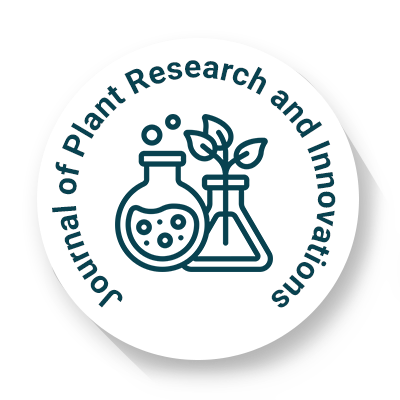
Journal of Plant Research and Innovations
OPEN ACCESS

OPEN ACCESS
Plant stress signaling refers to the complex network of molecular, biochemical, and physiological processes through which plants perceive, transmit, and respond to diverse environmental stressors. These stressors can be categorized broadly into abiotic factors, such as drought, salinity, temperature extremes, heavy metal toxicity, and oxidative stress, and biotic factors, including pathogens, herbivores, and parasitic organisms. Upon exposure to a stressor, plants initiate a cascade of signaling events that begin with stress perception at the cellular or membrane level, often mediated by specific receptors or sensor proteins. This is followed by signal transduction through secondary messengers such as calcium ions (Ca²?), reactive oxygen species (ROS), nitric oxide (NO), and phytohormones including abscisic acid (ABA), salicylic acid (SA), jasmonic acid (JA), and ethylene. These molecules function to amplify and relay the signal to downstream targets, culminating in the activation or repression of stress-responsive genes. The ultimate goal of these signaling pathways is to reprogram cellular metabolism, regulate growth, and induce defensive or adaptive mechanisms that enhance the plant's ability to withstand adverse conditions.
The specificity and efficiency of plant stress signaling pathways are governed by the dynamic crosstalk between different signaling components, allowing plants to mount tailored responses to distinct or overlapping stress signals. Transcription factors such as DREB (Dehydration-Responsive Element Binding), WRKY, MYB, and NAC families play crucial roles in mediating gene expression changes during stress conditions. Moreover, the integration of stress signaling with developmental and metabolic pathways ensures that stress responses are finely tuned to balance survival and growth. In recent years, advancements in genomics, proteomics, and transcriptomics have enabled the identification of key signaling nodes and regulatory networks involved in stress perception and response. Additionally, post-translational modifications of signaling proteins—such as phosphorylation, ubiquitination, and sumoylation—have emerged as critical regulatory mechanisms that modulate signal strength and duration. The involvement of non-coding RNAs, including microRNAs (miRNAs) and long non-coding RNAs (lncRNAs), further adds complexity to the regulatory architecture of stress signaling. Understanding plant stress signaling is not only fundamental to plant biology but also of significant agronomic importance. The ability to manipulate stress signaling pathways through genetic engineering, genome editing (e.g., CRISPR/Cas9), or molecular breeding offers promising avenues for developing crop varieties with enhanced stress tolerance. As climate change intensifies the frequency and severity of environmental stressors, elucidating the intricacies of plant stress signaling networks becomes increasingly vital for ensuring global food security and sustainable agricultural productivity.